Did you know that San Marzano tomatoes, a popular heirloom variety native to Italy, have fewer seeds and are less acidic compared to other tomato varieties? These delicious tomatoes are known for their oblong shape, fleshy texture, and superior flavor. If you’re looking to grow your own San Marzano tomatoes, whether for their culinary versatility or simply for the joy of gardening, this guide is for you.
Key Takeaways:
- San Marzano tomatoes are a popular heirloom variety known for their flavor and texture.
- They have fewer seeds and are less acidic compared to other tomato varieties.
- Growing San Marzano tomatoes can be a rewarding experience for any garden enthusiast.
- They can be grown from seeds or purchased as seedlings from a local garden center.
- San Marzano plants require a longer growing season and can reach a height of 6 to 8 feet.
Identifying San Marzano Tomato Seeds.
When it comes to heirloom San Marzano tomatoes, identifying the seeds is a crucial step in selecting the best varieties for your garden. These iconic Italian tomatoes are renowned for their exceptional flavor, making them a favorite among home gardeners and chefs alike. Here’s a guide to help you identify high-quality San Marzano tomato seeds and explore the best varieties available:
San Marzano tomato seeds are typically easy to identify due to their distinctive characteristics. These heirloom heirloom San Marzano tomatoes have an oblong shape with pointed ends, setting them apart from other varieties. This unique shape is a key marker when searching for authentic San Marzano seeds.
When it comes to selecting the best San Marzano tomato varieties, there is a wide range of choices available. Notable options include the original heirloom San Marzano variety, as well as hybrids and cultivars. Let’s take a closer look at some of the top San Marzano varieties:
| San Marzano Variety | Characteristics |
|---|---|
| ‘San Marzano 15 F1 Hybrid’ | Resistant to diseases, high yields |
| ‘San Marzano Lungo F1 Hybrid’ | Longer fruits, excellent for sauces |
| ‘San Marzano Gigante 3’ | Large fruits, mild flavor |
| ‘San Marzano Scatalone’ | Elongated fruits, rich flavor |
| ‘San Marzano Lampadina’ | Unique bulb shape, sweet flavor |
| ‘Pink San Marzano’ | Distinctive pink fruits, luscious texture |
| ‘San Marzano Nano’ | Compact plants, ideal for smaller spaces |
| ‘Golden San Marzano’ | Golden-yellow fruits, vibrant flavor |
Each San Marzano variety offers its own set of characteristics, such as fruit size, shape, color, and flavor. Consider your preferences and culinary needs when choosing the best variety for your garden.
Now that you know how to identify San Marzano tomato seeds and understand the different varieties available, you are one step closer to growing these exquisite tomatoes in your own backyard. In the next section, I will guide you through the process of growing San Marzano tomato seeds from seed. Let’s get started!
Growing San Marzano Tomato Seeds.
To enjoy the delicious flavor and vibrant taste of San Marzano tomatoes, you can grow them from seeds. Follow these steps to successfully plant and nurture your San Marzano tomato seeds.
- Start Indoors: Begin by starting your San Marzano tomato seeds indoors, approximately 8 weeks before the last frost date in your area. This allows enough time for the seeds to germinate and develop into healthy seedlings.
- Sow the Seeds: Sow the San Marzano tomato seeds in a seed starting medium. Make sure the soil is moist and maintain a temperature of 70 to 80 degrees Fahrenheit. This optimal temperature encourages germination and healthy plant growth.
- Transplanting: Once the seedlings reach a height of 6 to 12 inches, it’s time to transplant them into a larger pot or the garden bed. When doing this, bury at least two-thirds of the stem. Planting the seedlings deep promotes the development of a strong root system, which is essential for healthy and vigorous plants.
- Provide Support: San Marzano tomato plants tend to grow tall and heavy with fruit, so it’s important to provide them with adequate support. Use a trellis or stake to prevent the plants from falling over as they grow. This support ensures that the plants remain upright and helps them distribute their weight evenly.
| Steps | Description |
|---|---|
| Start Indoors | Begin sowing the San Marzano tomato seeds indoors, 8 weeks before the last frost date. |
| Sow the Seeds | Plant the seeds in a seed starting medium, keeping the soil moist and maintaining a temperature of 70 to 80 degrees Fahrenheit. |
| Transplanting | When the seedlings reach 6 to 12 inches tall, transplant them into a larger pot or the garden bed, burying two-thirds of the stem. |
| Provide Support | Use a trellis or stake to support the growing plants and prevent them from falling over. |
Now that you’ve successfully planted your San Marzano tomato seeds, it’s time to provide them with ideal growing conditions. In the next section, we will discuss the optimal conditions for growing San Marzano tomato plants.
Ideal Conditions for Growing San Marzano Tomato Seeds.
Growing San Marzano tomatoes requires providing the ideal conditions for their optimal growth and fruit production. Here are some essential factors to consider:
- Full Sun: San Marzano tomato plants thrive in full sun, soaking up at least 6 to 8 hours of direct sunlight every day. Ensure that your growing area receives ample sunlight or consider using grow lights if you’re gardening indoors.
- Organic, Well-Draining Soil: These tomatoes prefer organic soil with excellent drainage, allowing excess water to escape easily. Aim for a pH level between acidic and neutral, ideally ranging from 5.8 to 7. You can achieve this by combining high-quality soil with organic matter such as peat moss or compost. Adding garden lime can help balance the pH if necessary.
- Consistent Moisture: Keep the soil consistently moist, but avoid overwatering, as excessively wet conditions can lead to root rot and other plant diseases. Water the plants regularly, adjusting the frequency according to weather conditions. Use your finger to check the moisture level in the soil before watering and ensure it’s slightly damp but not waterlogged.
- Appropriate Fertilization: Provide the San Marzano plants with proper nutrients for healthy growth and bountiful fruit production. Fertilize them with a balanced 5-10-10 fertilizer or a water-soluble tomato fertilizer, following the manufacturer’s instructions. Apply the fertilizer during transplanting and periodically throughout the growing season.
By creating an environment that meets these ideal conditions, you’ll give your San Marzano tomato seeds the best chance to flourish and produce delicious, organic tomatoes.
Expert Tip:
“Remember, achieving the ideal conditions for growing San Marzano tomatoes is crucial for ensuring the best possible flavor and yield. Don’t compromise on sunlight, soil quality, adequate moisture, and timely fertilization. Your efforts will be rewarded with mouthwatering, homegrown tomatoes.”
San Marzano Tomato Ideal Growing Conditions
| Condition | Recommendation |
|---|---|
| Sunlight | 6 to 8 hours of direct sunlight per day |
| Soil | Organic, well-draining soil with a pH level of 5.8 to 7 |
| Moisture | Consistently moist soil, avoiding waterlogging |
| Fertilization | Balanced 5-10-10 or water-soluble tomato fertilizer |
Providing the ideal growing conditions for your San Marzano tomato plants will pave the way for a successful harvest of beautiful, flavorful tomatoes.
Tips for Nurturing San Marzano Tomato Seedlings.
As you embark on your journey of growing San Marzano tomato seedlings, it’s important to provide them with proper care and support. Here are some tips to ensure the success of your seedlings:
- Transplanting: Wait until your seedlings are 6 to 12 inches tall before transplanting them into their permanent location. Be sure to bury them deep, covering at least two-thirds of the stem. This will encourage strong root development, allowing the plants to establish a solid foundation.
- Spacing: When planting your San Marzano tomato seedlings, make sure to provide adequate spacing between them, typically 30 to 48 inches apart. This will allow for proper airflow and ensure each plant receives enough sunlight for healthy growth.
- Support: San Marzano tomato plants tend to grow tall and can become heavy with fruit. To prevent them from toppling over, stake the plants or provide a strong cage for support. This will help maintain their upright position and prevent any damage.
- Sunlight and Moisture: San Marzano tomato seedlings thrive in full sun, so make sure they receive at least 6 to 8 hours of direct sunlight daily. Additionally, keep the soil consistently moist but not waterlogged. Monitor the moisture levels and adjust your watering accordingly, taking into consideration the weather conditions.
- Pest and Disease Control: Regularly check your seedlings for any signs of pests or diseases, such as aphids, spider mites, or fungal infections. If necessary, apply appropriate remedies to protect your plants and maintain their health.
By following these tips, you’ll provide your San Marzano tomato seedlings with the necessary care and support for optimal growth. Keep a watchful eye on their progress and make adjustments as needed. Happy gardening!
Testimonials
“These tips helped me nurture my San Marzano tomato seedlings with confidence. They grew beautifully and produced an abundant harvest!” – Sarah G.
Troubleshooting Tips
| Issue | Possible Cause | Solution |
|---|---|---|
| Pale, yellowing leaves | Nutrient deficiency | Fertilize the soil with a balanced tomato fertilizer or organic compost |
| Wilting and drooping plants | Overwatering or underwatering | Adjust watering to maintain consistent moisture levels; avoid overwatering or allowing the soil to dry out completely |
| Stunted growth | Lack of sunlight | Ensure the seedlings receive adequate direct sunlight; consider using grow lights if natural sunlight is limited |
Harvesting and Storing San Marzano Tomatoes.
After patiently nurturing your San Marzano tomato plants, it’s time to reap the rewards of your hard work by harvesting and storing these delicious tomatoes. Here’s how you can ensure the best flavor and longevity for your San Marzano tomatoes.
San Marzano tomatoes typically ripen within 78 to 85 days after transplanting. When the fruits are large and slightly green and yellowish, they are ready to be harvested. To do so, simply twist the stem gently or use clippers to detach the tomatoes from the plant.
If you accidentally pick the tomatoes too early, don’t worry! You can allow them to ripen off the vine by placing them in a paper bag. The trapped ethylene gas will help speed up the ripening process, allowing the tomatoes to develop their full flavor.
Interestingly, San Marzano tomatoes can continue to ripen even after being picked. This is why it’s essential to check your plants regularly and harvest the ripe tomatoes to avoid overripening or loss of flavor.
Once you have harvested your San Marzano tomatoes, it’s time to focus on storing them properly to extend their shelf life. Ripe tomatoes should be stored in a cool, dry place. If you prefer, you can also store them in the refrigerator to help slow down the ripening process.
To save San Marzano seeds for future planting, it’s crucial to allow the tomatoes to fully ripen on the vine. This ensures that the seeds are mature and viable. Once the tomatoes have ripened, extract the seeds and dry them thoroughly before storing them in a cool, dry place.
Harvesting and Storing San Marzano Tomatoes – Summary
| Harvesting and Storing San Marzano Tomatoes | |
|---|---|
| Ripening Time | 78 to 85 days after transplanting |
| Harvesting Technique | Twist the stem gently or use clippers |
| Off-Vine Ripening | Place in a paper bag to speed up ripening |
| Extended Ripening | San Marzano tomatoes can continue to ripen even after being picked |
| Storage | Keep ripe tomatoes in a cool, dry place or store in the refrigerator |
| Seed Saving | Allow tomatoes to fully ripen on the vine before extracting and drying the seeds |
Enjoy the rich, flavor-packed San Marzano tomatoes that you have lovingly grown and harvested. With proper storage and seed saving techniques, you can savor the taste of these exceptional tomatoes long after the harvest season has ended.
Tips for Container Gardening with San Marzano Tomato Seeds.
Container gardening is a fantastic way to grow San Marzano tomato seeds, especially if you have limited space or want the convenience of portable plants. Here are some essential tips to help you succeed with container gardening:
- Choose the right container: Select a container with a minimum volume of 10 gallons for indeterminate varieties or 5 gallons for smaller determinate varieties. Make sure the container has proper drainage holes to prevent waterlogging.
- Opt for well-draining potting mix: Create a favorable growing environment by using a mixture of cocopeat, compost, or perlite. This blend will ensure good drainage and provide the necessary nutrients for healthy plant growth.
- Find the perfect spot: Place your container in a location that receives at least 6 to 8 hours of direct sunlight per day. San Marzano tomatoes thrive in full sun, so choose a sunny spot on your porch, balcony, or patio.
- Water regularly: Keep the soil consistently moist by watering the plants regularly. Check the moisture level by sticking your finger about an inch into the soil. If it feels dry, it’s time to water. Avoid overwatering, as it can lead to root rot.
- Provide support: San Marzano tomato plants can grow tall and may require support to prevent them from toppling over. Stake the plants or use a tomato cage to provide adequate support as they grow.
“Container gardening offers flexibility and convenience. Whether you have a small balcony or a sunny window sill, you can still enjoy the delicious taste of homegrown San Marzano tomatoes.”
By following these tips, you can successfully grow San Marzano tomato seeds in containers. Enjoy the satisfaction of homegrown tomatoes and the convenience of having fresh produce right at your fingertips!
Common Pests and Diseases of San Marzano Tomato Plants.
While San Marzano tomatoes are generally resistant to many pests and diseases, they can still be susceptible to some common tomato pests. It’s important to monitor the plants regularly and take appropriate measures to control these pests and prevent diseases.
Pests
Below are some of the common tomato pests that can affect San Marzano tomato plants:
- Aphids
- Mealybugs
- Spider mites
- Leaf miners
To control these pests, you can use hot water or sticky strips. Regularly inspect the plants for any signs of infestation and take immediate action to prevent further damage.
Diseases
One of the common diseases that can affect San Marzano tomato plants is blossom end rot. This condition is caused by a lack of calcium in the fruit and can lead to the development of black, sunken spots on the blossom end of the tomatoes.
To prevent blossom end rot, ensure consistent watering to maintain proper soil moisture levels. Additionally, adding sources of calcium to the soil, such as crushed eggshells or lime, can help mitigate the risk of this disease.
Here’s a table summarizing the common pests and diseases of San Marzano tomato plants:
| Pests | Diseases |
|---|---|
| Aphids | Blossom end rot |
| Mealybugs | |
| Spider mites | |
| Leaf miners |
In order to ensure the health and productivity of your San Marzano tomato plants, it’s essential to stay vigilant and take proactive measures to prevent and control pests and diseases.
Propagation and Pruning of San Marzano Tomato Plants.
When it comes to propagating San Marzano tomato plants, stem cuttings offer an easy and effective method. To propagate the plants, I recommend taking stem cuttings and rooting them in a potting mix. Simply select a healthy stem, around 4-6 inches in length, and remove any leaves from the bottom half. Place the stem in a soilless potting mix or a combination of peat moss and perlite. Keep the soil moist and provide indirect light until roots develop, which usually takes about 2-4 weeks.
Pruning is an important aspect of maintaining healthy and productive San Marzano tomato plants. Removing unwanted shoots and suckers helps concentrate the plant’s energy towards fruit production and promotes better airflow. I suggest regularly checking for suckers that develop in the “V” between the main stem and branches. These suckers can be pruned to direct more energy to the main stem and encourage larger and tastier fruits.
If you’re growing indeterminate varieties, pruning can also help control the plants’ growth and prevent overgrowth. It’s important to monitor the height and spread of the plants, ensuring they stay manageable and don’t overcrowd other plants in your garden. Regularly check for branches that may be touching the ground or hanging too low, as they can be pruned or supported to maintain a neat and organized growth pattern.
Pruning San Marzano tomato plants not only contributes to their overall health but also encourages the development of robust fruiting clusters. By removing unwanted growth and maintaining proper spacing, you’ll promote better air circulation and minimize the risk of diseases. Remember, a well-pruned San Marzano tomato plant is a happy and productive plant.
Overall, proper propagation and pruning techniques are essential for the successful growth of your San Marzano tomato plants. By following these guidelines, you can ensure healthy root development, maximize fruit production, and enjoy a bountiful harvest of delicious tomatoes. Now that you have the knowledge, it’s time to put your green thumb to work and watch your San Marzano tomato plants thrive.
Conclusion.
Growing San Marzano tomato seeds can be a truly rewarding experience for any garden enthusiast. These heirloom tomatoes are renowned for their exceptional flavor, unique shape, and culinary versatility. By following the proper planting, care, and harvesting techniques, you can enjoy a bountiful harvest of delicious San Marzano tomatoes right in your own garden.
Experimenting with different varieties and cultivation methods can help you discover what works best for your specific growing conditions and personal preferences. Whether you choose to start your plants from seeds or purchase seedlings, providing them with ample sunlight, well-draining soil, and consistent moisture will promote healthy growth.
As your San Marzano tomato plants flourish, be sure to give them proper support, such as staking or using a tomato cage, to prevent them from toppling over. Regularly monitoring for pests and diseases and taking appropriate measures to control them will help safeguard your precious plantings.
Once your San Marzano tomatoes are ready for harvest, carefully pick them when they are ripe, allowing them to reach their full flavor potential. Whether you use them in sauces, salads, or any other culinary creations, the rich taste and distinct texture of San Marzano tomatoes will truly elevate your dishes. So, embrace the joy of gardening and indulge in the satisfaction of growing and enjoying your very own San Marzano tomatoes!

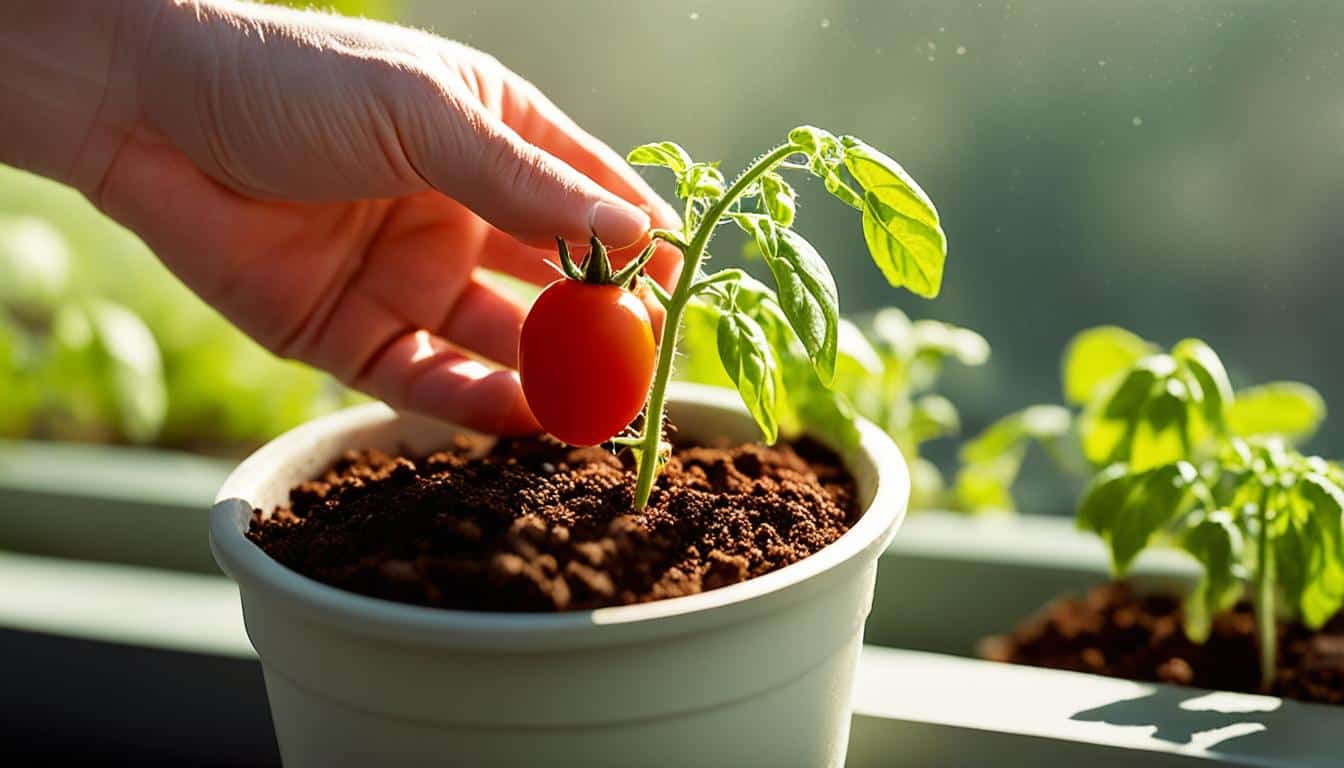
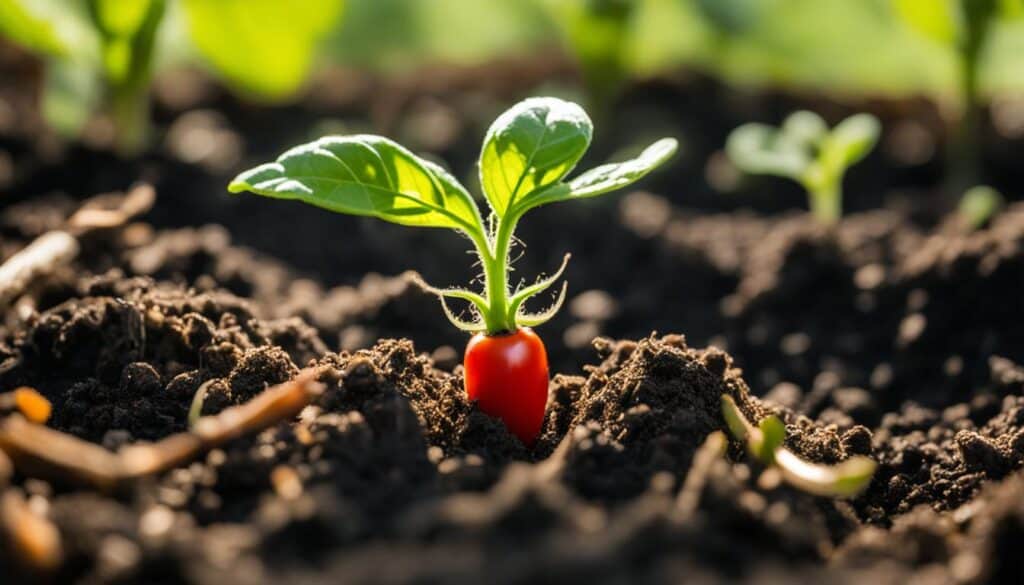
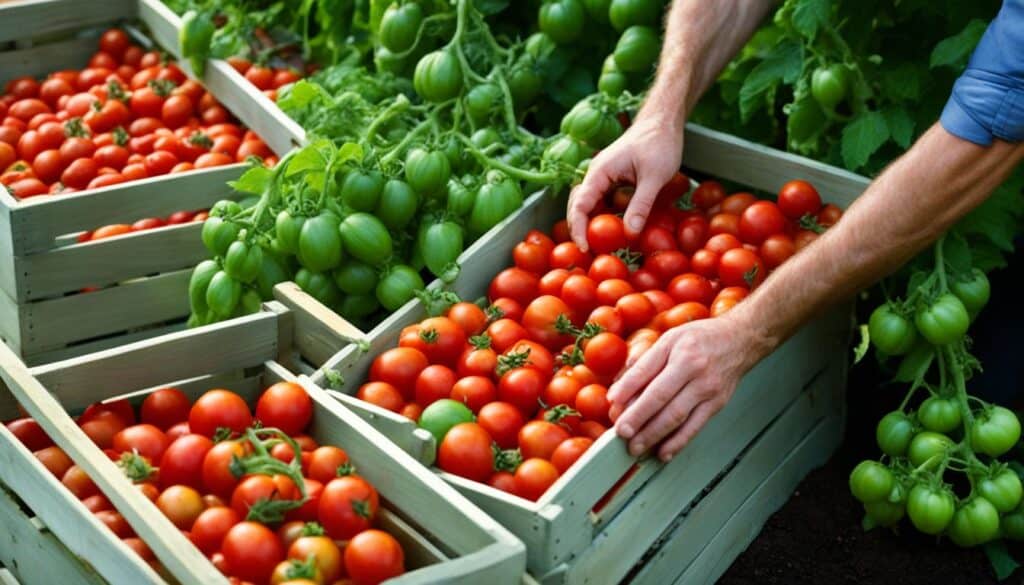
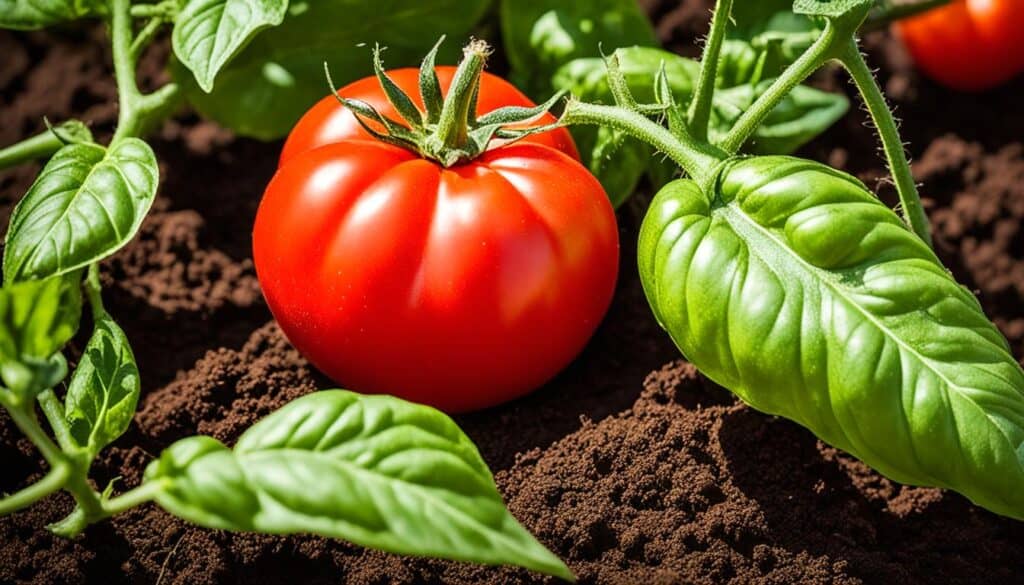
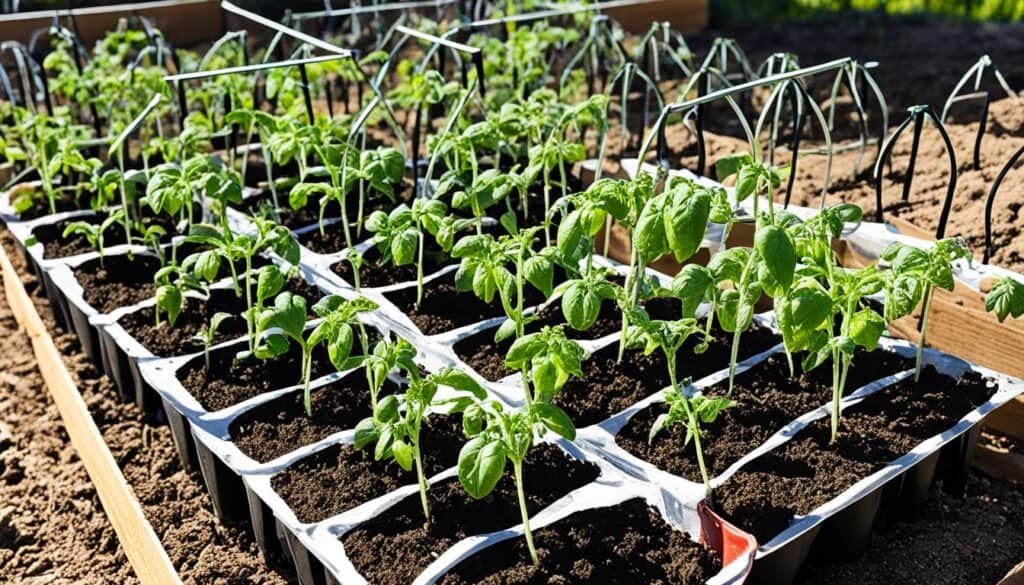
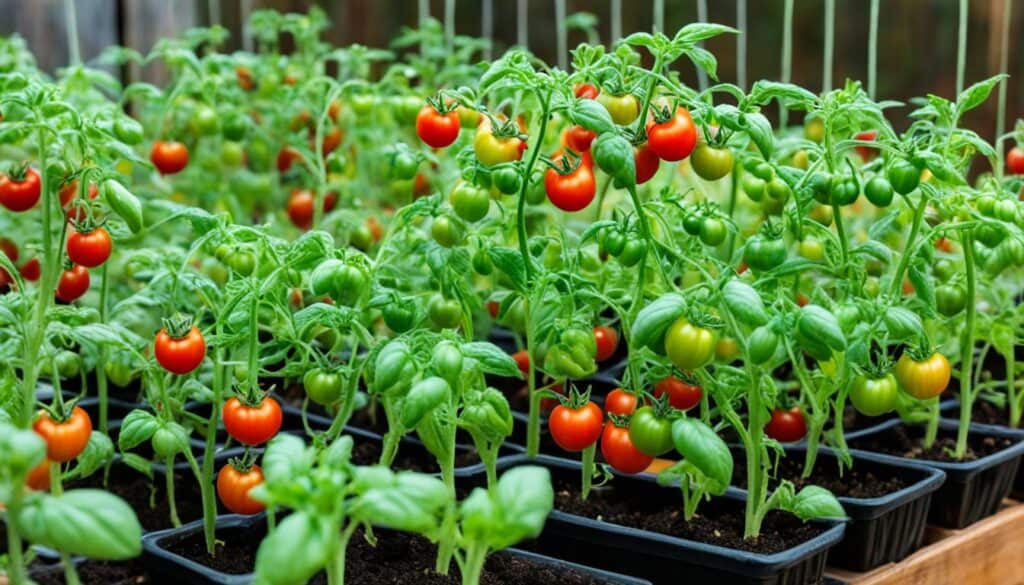



Leave a Reply